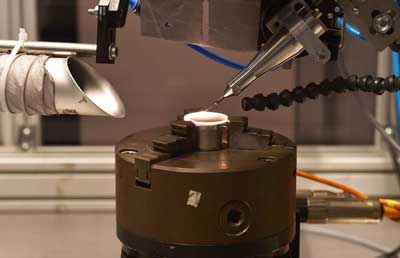| Nov 28, 2018 |
Optics and laser components out of the 3D-printer
|
|
(Nanowerk News) Complete laser systems out of the 3D printer? What sounds like a long way off is the goal of a new research project of the Gottfried Wilhelm Leibniz Universität Hannover (LUH) together with the Laser Zentrum Hannover e.V. (LZH), the Clausthaler Zentrum für Materialtechnik (CZM) and the Hochschule Hannover - University of Applied Sciences and Arts (HsH).
|
|
They want to 3D print at least parts of a laser system. Because this manufacturing technology enables completely new approaches for the production of lasers and for the lighting industry.
|
 |
| The 3D printing of glass can enable new optic geometries. (Image: Laser Zentrum Hannover)
|
|
The scientists of the innovation network GROTESK want to 3D print optics and optomechanical components made of different materials, such as glass, polymers and metals, ideally in one step. In that way, for example, it is possible to create complex optical geometries or to print holders with integrated cooling channels around conventional components, such as laser crystals.
|
Rethinking manufacturing
|
|
"With Additive Manufacturing we can leave conventional thinking behind. The manufacturing of optics and components can be implemented in a completely different way. We are thus creating new design options for optical transmission paths, housing structures and thermal management", summarizes Dr. Dietmar Kracht, Scientific-Technical Director of the LZH.
|
|
In cooperation with the LUH, CZM and HsH, the LZH will define the requirements for the optical elements, create their design and examine the finished products for their optical, thermal and structural properties.
|
About GROTESK
|
|
The project acronym GROTESK stands for “Generative Fertigung optischer, thermaler und struktureller Komponenten“ (generative manufacturing of optical, thermal and structural components). The project is being carried out in the innovation network under the leadership of the Gottfried Wilhelm Leibniz Universität, together with the Clausthaler Zentrum für Materialtechnik, the Hochschule Hannover - University of Applied Sciences and Arts and the LZH. The joint research project has a total volume of about 1.9 million euros and is partly financed by the European Regional Development Fund (ERDF) and the State of Lower Saxony.
|

